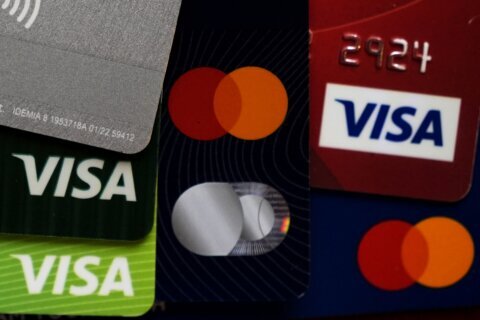Over the past month, D.C. police have found skimming devices at point of sale card machines at 10 different locations in the city, many of them popping up at local convenience stores in Northwest and Northeast.
Those skimmers can pull information and money from debit or credit cards when you swipe. So how can you protect yourself when you are checking out?
According to FICO, a data analytics company, card skimming fraud grew around 700% in the first half of 2022. The FBI estimates that skimming costs financial institutions and consumers more than $1 billion each year.
John Breyault, the vice president of public policy, telecommunications and fraud at the National Consumers League, suggests the first thing you can do is update any card that you have to chip technology.
“Any card at this point in time that only has a mag-stripe is an insecure card. It’s just inviting fraud,” Breyault said. “Using a chip-based system is far more secure.”
Because of this, EBT cards, which are not yet updated with chips, are often targeted by scammers.
He said trying to spot a skimmer is tough because it could be hidden internally. But there are some signs you can look for, such as a card reader that is loose or jiggles, or if there is a reader attached somehow to the ATM or card reader.
“But again, these are professional criminals who are involved in these scams, and consumers who just want to get money out of an ATM. It’s going to be hard to spot these scams,” Breyault said.
He said when fraudsters place skimmers on ATMs, they will also often install cameras or false keypads so they can steal PINs.
To be extra cautious, only use ATMs that are inside banks rather than stand-alone machines in bars, restaurants and convenience stores.
“So when you’re dealing with … people who run a gas station or convenience store or restaurant workers, they’re not trained to spot an ATM that has been tampered with,” Breyault said.
If you do get skimmed, make sure you report it to your bank or credit card company and authorities, whether it is you police department, the Federal Trade Commission or the Consumer Financial Protection Bureau.
“This is how law enforcement agencies at the state and federal level identify trends and build cases against fraudsters,” Breyault said.
You can also report cases of skimming to the National Consumers League.








